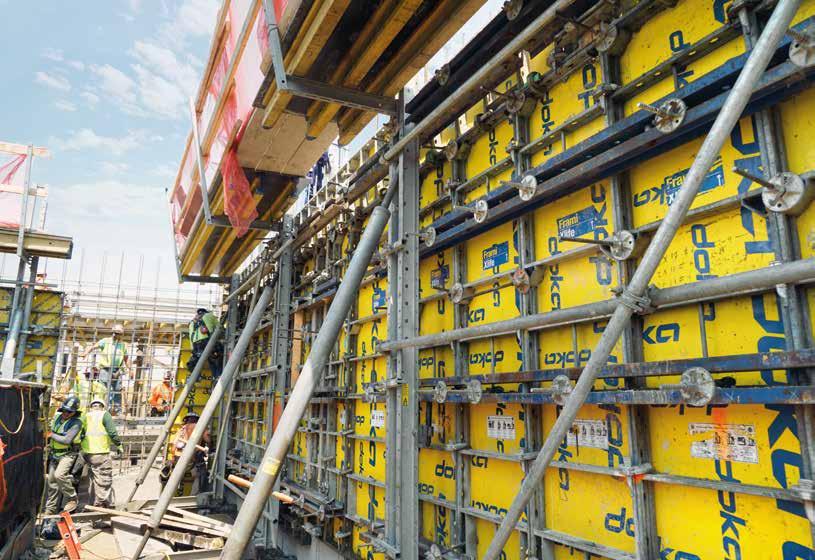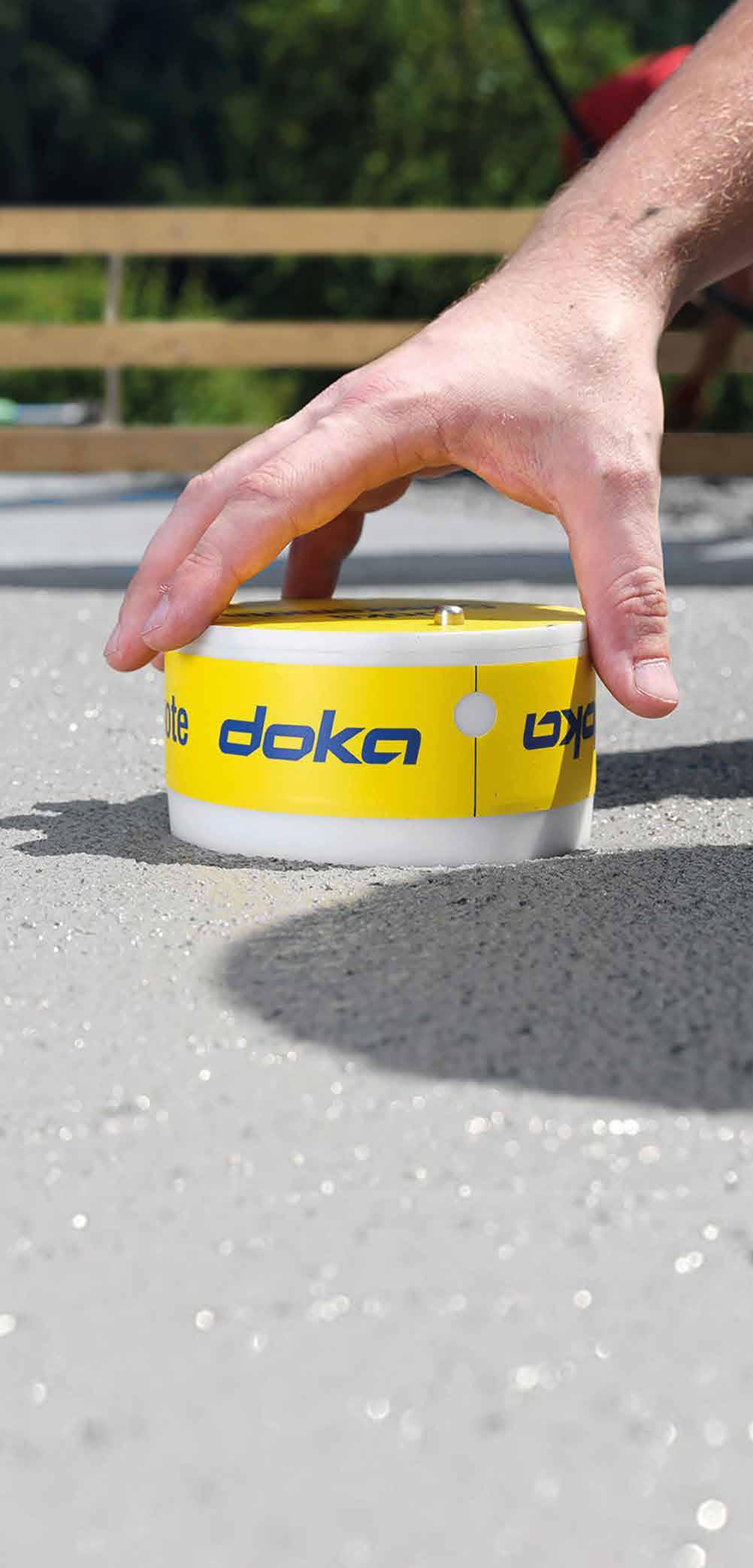
4 minute read
Aloft Hotel in Hudson Yards
by Doka


The Challenge
The slab edge design provided a challenge with alternating projections in both directions, like a saw tooth, which created a tricky gap closure between the slab and the protection screen. A project specific gap closure was needed to maintain a constant distance from the face of screen, eliminating the need for repositioning or increased imposed loads on the structure.
The Solution
Doka fabricated and supplied special aluminum shoe components to manage the additional distance of the screen from the slab edge. The use of aluminum minimized the weight of the shoes reducing the labor required for cycling. Doka’s superior field service and superb preassembly accommodated the tight installation window.
3
4
Moncon’s one-stop formwork shop
The 487 ft. tall Aloft Hotel in Hudson Yards is a rising 51-story skyscraper located at the corner of West 37th Street, directly across from the Jacob K. Javits Center.
The structure’s distinctive design contains staggered angles of the floor plate edges that will eventually take the form of a stack of reflective glass boxes stacked on top of one another. The design will stand out among the surrounding skyscrapers due to the dynamic windows.
To work on this challenging design, concrete contractor, Moncon, Inc., brought Doka on board to provide a one-stop-shop for formwork needs and construction support. Moncon is a highly regarded New York City based drilling, excavation, foundation and superstructure company with previous experience working with Doka. They felt Doka’s systems and field service were unmatched, which was an important consideration for this landmark project. An unusual saw tooth slab edge design created safety challenges that required Doka’s innovative thinking to ensure that protection screens were effective. Doka's field and engineering teams suggested various solutions for the complex project and offered field support for any concerns.
Construction at the Aloft Hotel at 450 Eleventh Avenue began in 2019 and is scheduled for completion in 2022. §
1 The full-area enclosure around the perimeter of the building enables all work to be carried out in complete safety, protected from all weather conditions.
2 A loading platform can be integrated into the protection screen for straightforward, safe repositioning of slab formwork, tools and other materials.
3 Framax Xlife is the wall form system that uses only a very few different panel formats to achieve a consistent 6" (15 cm) increment-grid, no matter whether the panels are stood upright or on their sides. 4 SuperDek is a simple handset drop head slab formwork system. It provides a large grid / prop spacing up to 8' x 8' (64sf), interlocking joists and stringers and a unique slab edge forming solution.
Screen protection was requested by the ownership. This was a challenging design as every slab edge in the 50 floors was atypical. Doka engineered a protection system to allow us to use engineered shoe anchors with typical layouts which made the system more efficient and field friendly. Doka's engineering team were on top of all our engineering needs and redesigns were quickly resubmitted as needed.
DIGITALIZATION

2 proven products for the digital age of construction
If there was a general takeaway from the last bauma, it was that the industry is finally embracing the digital revolution and understanding the extensive cost benefits of leveraging technology to improve accuracy and efficiency.
At Doka, its R&D teams have spent the previous few years listening to the valuable feedback provided by site teams and clients in order to understand the prevailing industry challenges and how they could be overcome through new devices, products or systems. Doka has transformed innovative ideas into digital solutions helping optimize construction workflow. Discover two of Doka’s digital services that have been well-received on projects all around the world and learn why they offer such great value. §
One of Concremote’s lesser known benefits is its ability to provide valuable data during the planning stages. Thanks to its calibration system, site teams are able to simulate the strength gain and temperature development for each concrete mix and ready-mix plant in advance, meaning there are more options for selecting a concrete mix based on fast strength development vs. high-cost mixtures, or slow strength development vs low-cost mixtures.
The effects of temperature early in the life of concrete can strongly influence long-term stability. In general, concrete temperature peaks at 48 hours and remains constant for seven days. The larger the concrete structure, the more heat it will likely generate. Differential temperature, air temperature and concrete mix temperature are all important factors. Monitoring the temperature of concrete during the curing process is a critical factor in making sure the product sets to its full strength and knowing when it is safe to build on. §
and discover how you can reach similar conrete color tones by the use of Concremote?
Concremote
Valuable data. Concremote uses sensors to measure the temperature and calculates compressive strength of the concrete structure. Due to this method, users can plan construction projects and have access to real-time data at any time, no matter where they are. As a result, they gauge concrete performance and initiate the necessary measures at exactly the right time.

Concremote is the only real-time wireless concrete monitoring and forecasting device for monitoring concrete temperatures for thermal stresses as well as real-time compressive strengths.
Mark Robertson, Business Development Manager, Digital Service Overseas, Doka









